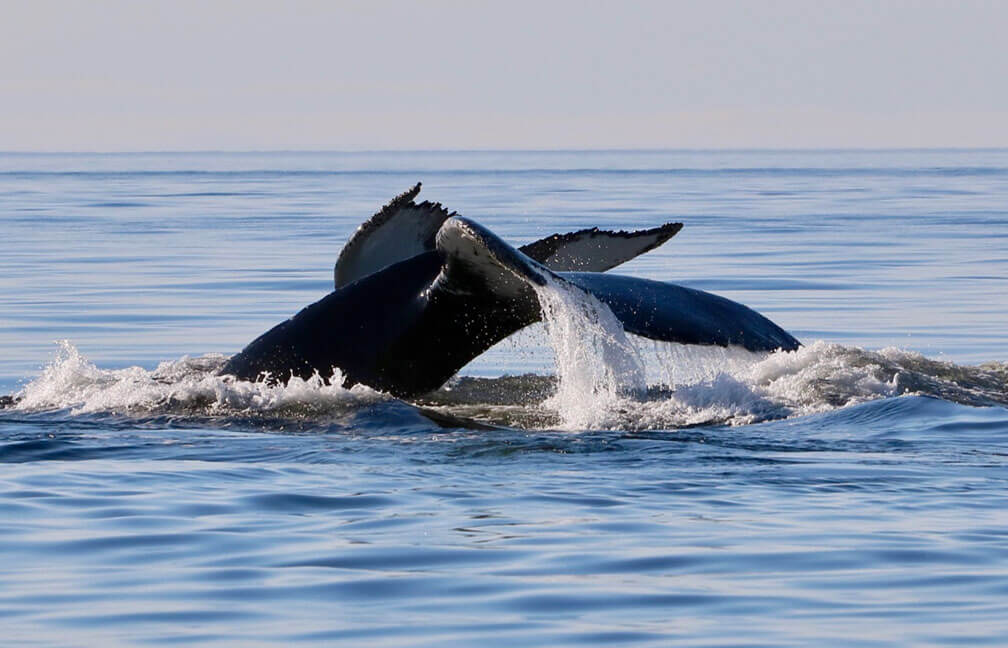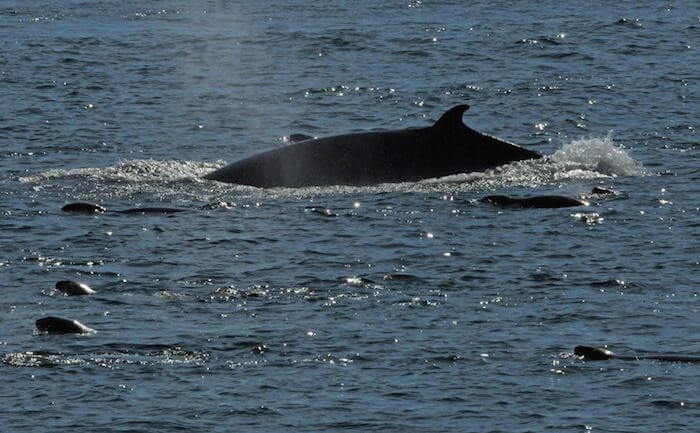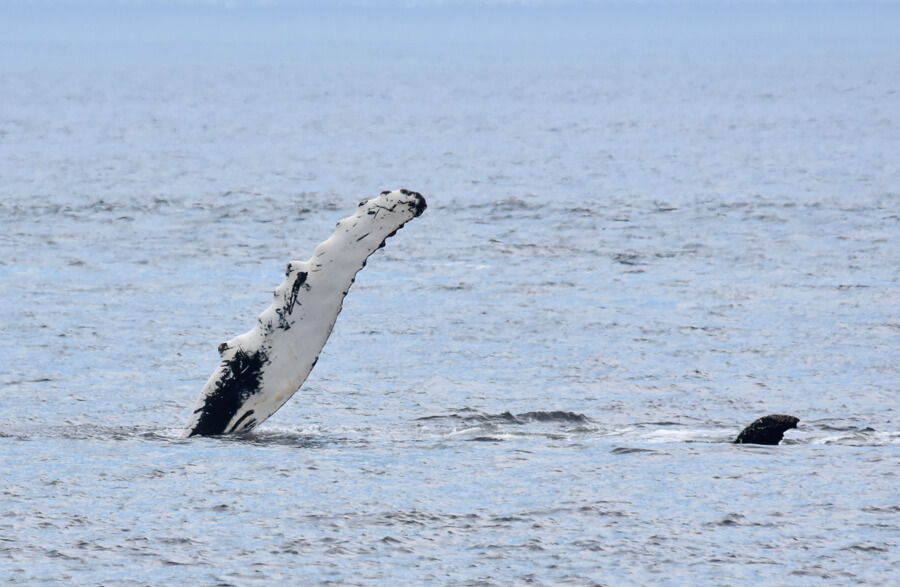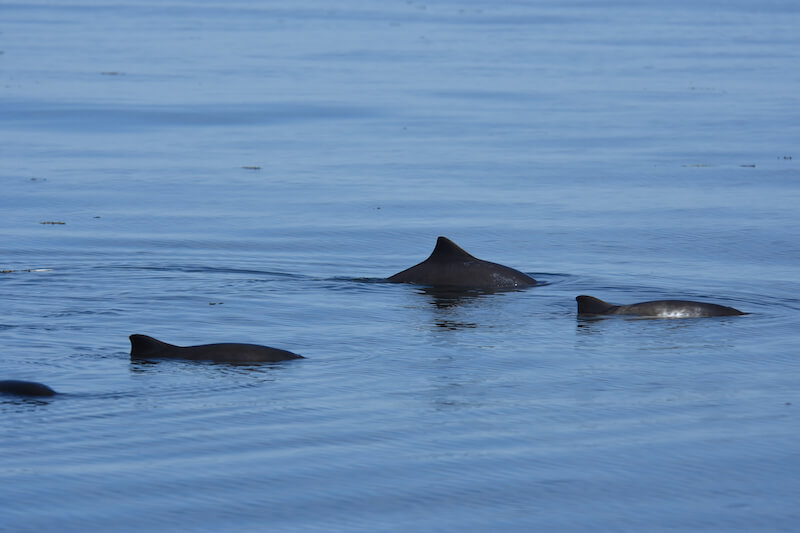During the summer months, thirteen species of whales feed in the rich waters of the St. Lawrence. Some species are more commonly observed than others. Minke whales, humpback whales, fin whales and blue whales are the most frequently encountered baleen whales. As for toothed whales, belugas and harbour porpoises have been delighting observers. All six of these species were seen this week, a sign that the whale-watching season is well underway!
Minke whale
The smallest of the baleen species has been observed opposite Baie-Comeau, Cap-Chat, Cap-aux-Os, Les Bergeronnes, Les Escoumins and Sainte-Anne-des-Monts. The minke whale measures 6 to 9 m. When it surfaces, one can generally see its blowhole and dorsal fin at the same time. The back then forms a half-moon.
Fin whale
Add 10 metres to the minke whale and now you have a fin whale (18 to 24 m)! But there is much more than the significant difference in size that sets these two species apart visually. The minke whale shows white spots on its pectoral fins. Fin whales, on the other hand, like those observed near Anse-au-Griffon, Les Bergeronnes or Port-Cartier, feature a two-toned jaw: black on the left and white on the right. It is also on the right side that one can see the grey, white, brown and black chevrons at the back of the head. When a fin whale surfaces, it can often take a few seconds between the time the blowhole appears and the time dorsal fin emerges.
Blue whale
Measuring between 21 and 28 m long, the blue whale wins the prize for size. But if the largest fin whales can grow nearly as big as the smallest blue whales, how can one to distinguish them with certainty? By their colour! A fin whale’s back is rather dark, while that of a blue whale is grayish-blue. But reflections of the sun or overall brightness can make it difficult to discern colours, as we can see in this photo taken on April 29 off the coast of Sept-Îles. The dorsal fin of blue whales appears tiny on the animal’s long back and is generally more triangular in shape than that of fin whales.
Humpback whale
Over the past few days, humpbacks have been seen swimming in pairs and even more so in trios in Gaspé Bay, opposite Cap-aux-Os. Humpback whales have a very dark back, topped by a small hump on which the dorsal fin sits. The leading edge of the pectoral fins is jagged; humpbacks are the only species to have such fins.
Harbour porpoise
Harbour porpoises are quite common in the St. Lawrence, but often difficult to observe. Owing to their small size (1.3 to 2 m), their backs appear on the surface for a mere split second off L’Anse-au-Griffon. What’s the difference between porpoises and dolphins? Porpoises have a triangular dorsal fin similar to a sail, while that of dolphins is more sickle-like in shape. Dolphins are also generally larger in size and more streamlined.
Beluga
OK, this one is hard to miss! Adult belugas are all white. But beware, among belugas one can sometimes see grey or even brownish individuals. Who are they? Juvenile belugas! The beluga changes colour over the course of its life. Light brown at birth, it later turns dark greyish-blue before gradually becoming increasingly paler until it turns completely white between the age of 12 and 16 years. This week, belugas have been observed in Charlevoix (L’Isle-aux-Coudres, Cap-aux-Oies and Saint-Irénée), in the Bas-Saint-Laurent region off Rivière-du-Loup and in Haute-Côte-Nord, from Tadoussac to Les Escoumins.
The capelin are already “rolling” in L’Isle-aux-Coudres, which could explain the abundance of belugas near this island last weekend. Have you seen any capelin? Don’t hesitate to report your sightings to eCapelin. These observations are useful for documenting the state of this very important fish in the diet of many species.











